Design Process
During the design process I wanted a flower-like pattern with sharper end points at each side using an arcsine function. The first vessel was simple, mostly just testing different radius parameters and the amount of points on the flower shape. When it came to the second vessel I wanted to mess around more with the twist function I had created which led to a wine glass sort of shape. However, this initial shape made some failed prints so I changed it to be more thick. Finally, for the last vessel I went back to the flower-like design and wanted to make a vessel that was a twisting plant structure where the base represented petals. All of these vessels were created by messing around with different user defined parameters I had for my program.
Vessel 1


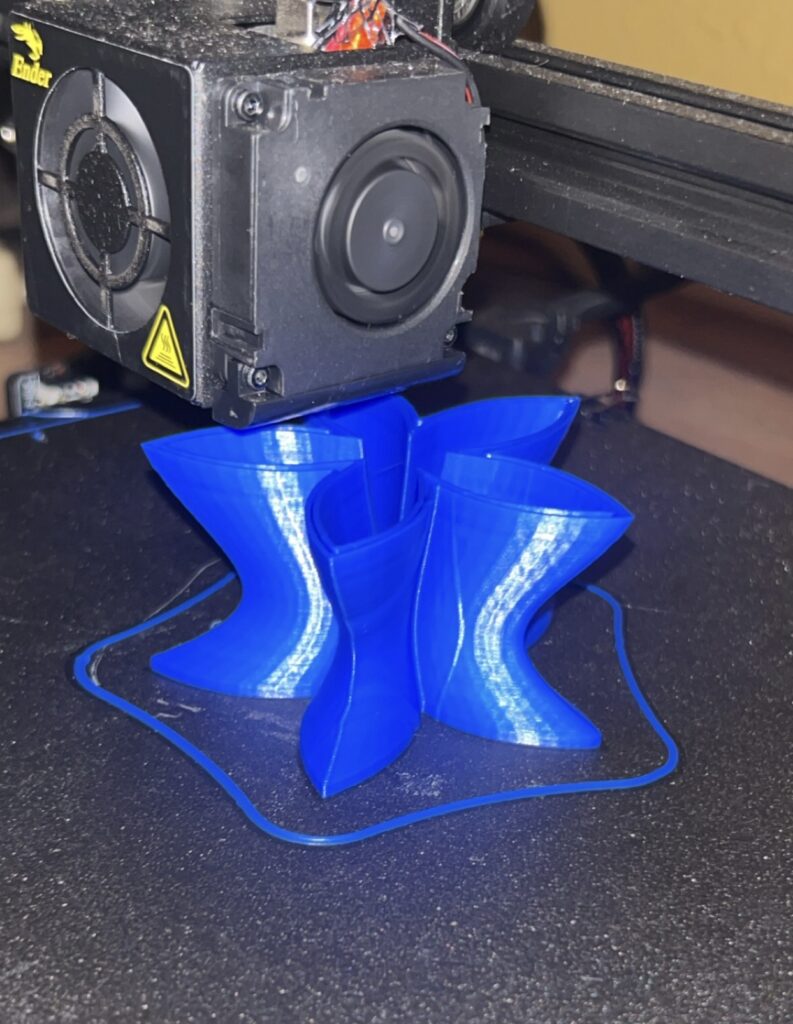
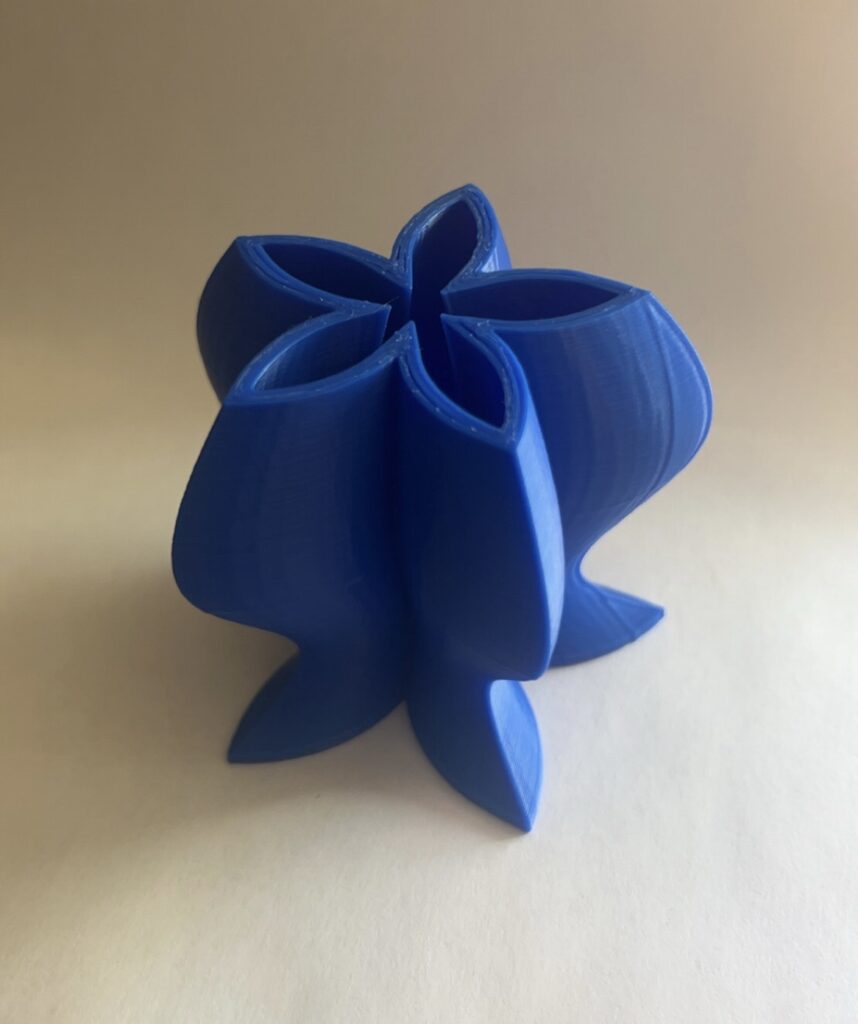
Vessel 2
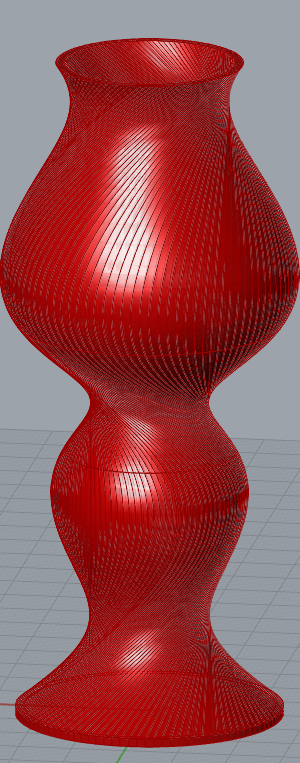
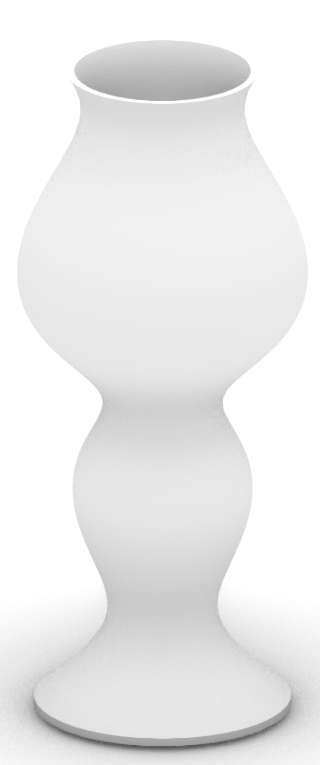


Vessel 3
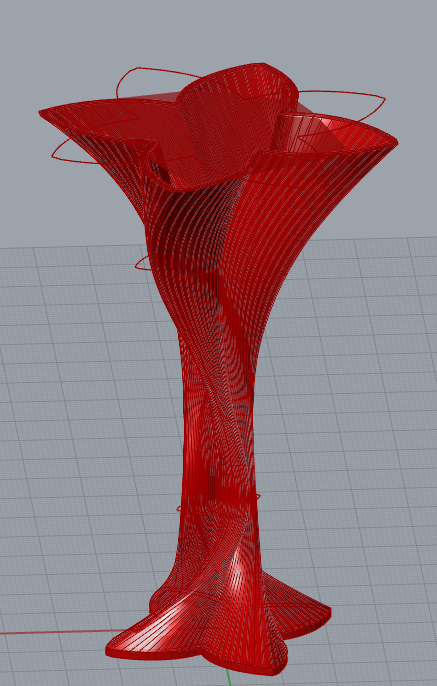
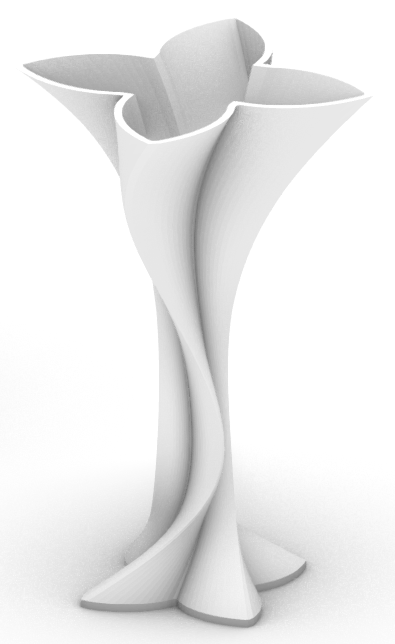

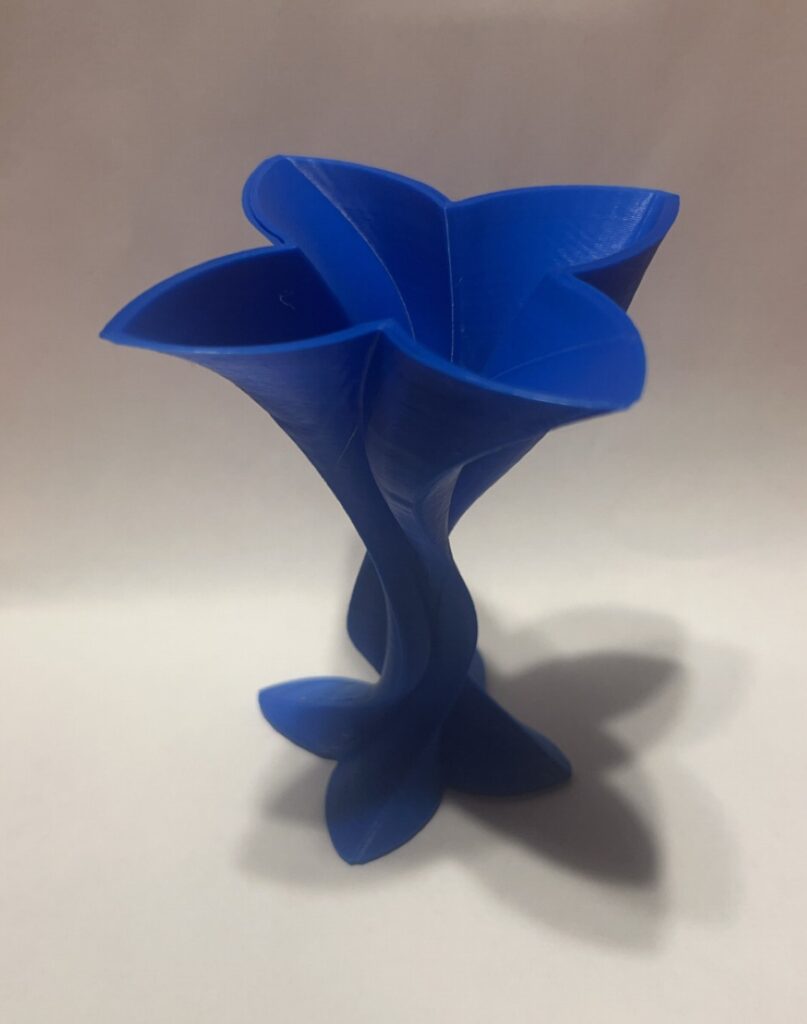
Unfortunately, the sun had gone down 30 min before the print was done so I had to use artificial light for this photo. Will updated tomorrow morning.
Parametric Process
When it comes to parametric design, it tends to be a lot more consistent and easy to change. Before I would have to change many aspects of a 3D model just to make a new shape. However, with parametric design I can make new shapes and designs that are completely different from a previous one just by moving a slider. Some advantages include easy manipulation, time saving, mass production, and precision. One of the big disadvantages was the lack of any real fun. It’s nice that I can make such complex designs but at the end of the day I’m just moving sliders around.
Creative Agency & Intent
When it came to designing my vessels I wanted to create a flower-like shape with sharp end points. Therefore, I used a mathematical arcsine function that allowed for such a shape. After this was coded I mixed and matched multiple different parameters and found that I could create entirely different shapes than I had originally planned for. However, it was frustrating changing one parameter to find that it wasn’t compatible with another. My sense of authorship feels entirely different from a more traditional design process. During the traditional process I feel like I have to put in a lot more effort and research to get something I want. Although both can be frustrating at the end of a traditional design process I feel more accomplished than I do with a parametric design process. Although the coding was interesting and fun, after that the fun essentially went away as I was restricted to inputting a value and waiting for a design to pop up, making it not as fluid or natural.
Failures
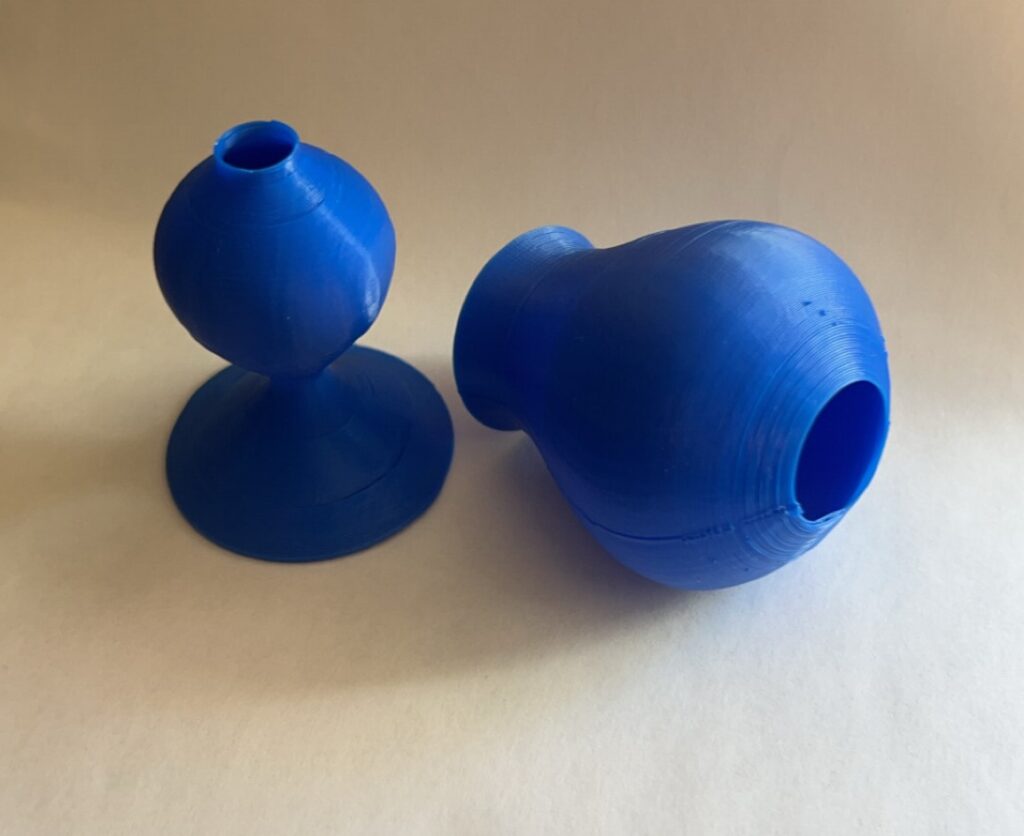

In the first image the 2nd vessel printed correctly but one of the thinner points of the vessel was extremely brittle and sadly broke off. In the second image the first print of the 3rd vessel had a lot of scarring and holes. Even the failed pieces get photo shoots though.
Hi Ryan,
I find the flower-inspired motif of your work very interesting. I can definitely see it in the first and third vessels you made. I hope that you can share pictures of your printed models as I am curious to see how they came out.
Hey German, I finally uploaded some pictures of the first and second vessel. The third vessel is about 3/4 of the way finished so I’ll update that soon as well!
Hi Ryan,
All of your artifacts are very cool but I think the first and the third are just mind blowing. Did the third vase require any supports? I just can not wrap my head around how that one could print without any supports. I really like your flower design on the first vase and I was wondering if you had any issues with grasshopper crashing? I made a similar shape and my program kept crashing because it was generated too many points for the structure.
Hey Patrick,
Although the option of supports was something I considered I ultimately thought that since the curve wasn’t too steep I wouldn’t need them. However, the print as of now is in its final stages so I’ll update you on if it completely falls apart or not!
For the first vessel (and the other two) I didn’t really have any issues with grasshopper crashing which is surprising since my computer is somewhat old. However, the program took forever to create the preview anytime I moved any parameters around which was incredibly annoying. Did you use an arcsine function or did you do something different?
Ray-ray,
All of your vessels came out very well. Interesting that one of them broke apart. I guess the thin walls isn’t that great of an idea when you have a dramatic angle. The shapes of them are great and your methods for creating them is cool too. The technique of changing stem angles was really neat too. Did you learn anything special from these prints or the failed prints? Great post.
Justin